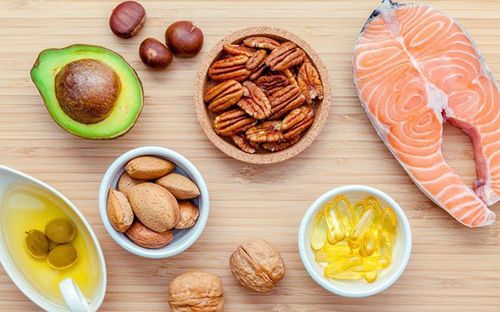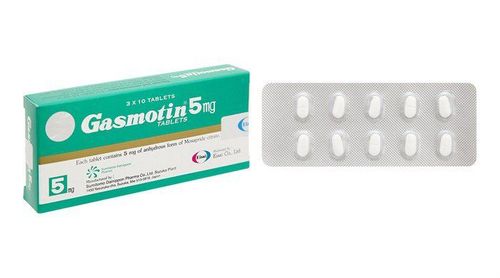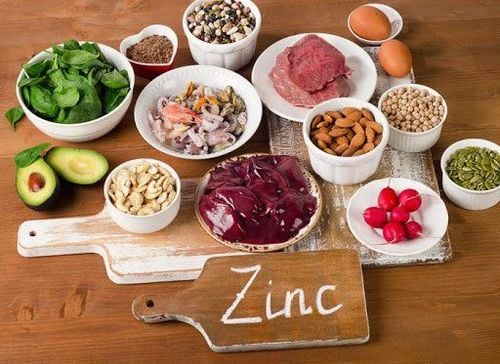This article has been professionally consulted by Ngo Thi Oanh, MSc, MD - Pediatrician - Department of Pediatrics - Neonatology - Vinmec Ha Long International General Hospital.
Milk is the primary source of nutrition for newborns. For infants who don't get enough breast milk and require formula supplementation, proper formula preparation is a crucial and valuable skill that parents should master.
1. What type of water is optimal for mixing infant formula?
Traditionally, many people mix formula with boiling water, assuming that it will 'sterilize' the milk, dissolve it more easily, and kill bacteria. However, this is incorrect.. Using excessively hot water to reconstitute milk can denature and destroy its nutritional components, thereby compromising its nutritional value. This inadvertently and unfortunately diminishes the milk's quality.
Mixing infant formula with cold water makes it difficult to dissolve. Moreover, the low temperature can inhibit the function of the infant's immature digestive enzymes. Additionally, since breast milk is typically consumed at body temperature, a colder formula can cause discomfort, leading to fussiness and feeding refusal. Consequently, warm water is recommended for formula preparation.
The infant formula should be reconstituted using warm water between 40 and 50°C. Some parents combine one part of boiled water with two parts of boiled water cooled down to obtain the desired temperature. Although this approach appears expedient, it is not recommended by nutrition experts.
Instead, a cup of boiled water should be placed in a basin with cold water to cool down gradually for immediate use in preparing infant formula. Because the water used for formula should not be left to cool at room temperature for more than two hours, as this increases the risk of infection for the infant.
2. What is the correct volume of formula to prepare?
Only prepare the amount of formula your baby needs for each feeding. If the infant consumed less at the previous feeding, a slightly larger amount can be prepared for the next feeding, and conversely. If the infant consistently finishes the prepared amount at each feeding, the amount can be gradually increased in subsequent feedings, but without forcing the child to finish.
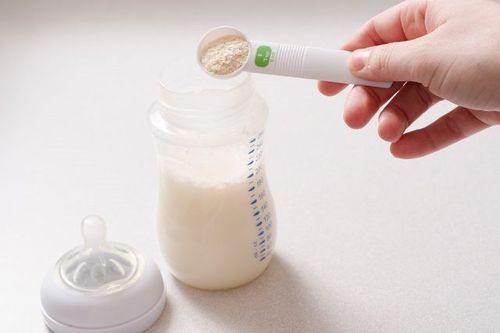
Accordingly, the amount of formula to prepare should be adjusted based on the child's age, weight, and individual needs; there is no fixed formula for all cases. Furthermore, it should always be remembered that for infants under six months old, breast milk remains the primary source of nutrition. Excessive formula feeding can lead to insufficient breast milk intake, while breast milk remains the preferred source of nutrition.
3. What to do with residual milk following each feeding?
For convenience, many parents prepare a single bottle of formula and use it for feedings throughout the night, neglecting the fact that prepared formula left at room temperature can become a source of infection for the child's immature digestive system.
It is essential to determine the correct amount of formula for each feeding to prevent any leftover formula. Any formula remaining after a feeding should be discarded promptly. It is contraindicated to refrigerate and reheat leftover formula for later use. Temperature changes can compromise the nutritional value of the formula and increase the risk of bacterial growth, as well as cause undesirable changes in the formula's consistency, such as clumping or separation, which can easily lead to digestive issues in the infant.
4. Is it safe to reconstitute formula with fruit juice?
Some parents may mistakenly believe that mixing infant formula with fruit juice will improve its taste and encourage consumption. However, this is not recommended. The only safe and recommended liquid for preparing infant formula is plain, purified water. All other types of water and liquids are not appropriate and may even be dangerous.
Although fruits are a rich source of vitamins for the body, for infants under six months of age, nothing is better than milk. As the infant matures and complementary feeding is introduced, fruit juice may be offered, however, it should be given separately from feedings. The reason is that the high concentration of vitamin C and various organic acids found in fruit can react with milk proteins, causing clumping, leading to indigestion, bloating, vomiting, and an increased risk of aspiration, especially when the infant is lying down.
Moreover, it is contraindicated to use liquids such as vegetable water, broths, rice water, soups, or mineral water when preparing infant formula. While any potential advantages of such practices are unsubstantiated, there is a significant risk of causing harm to the infant's immature digestive system, which is deficient in the enzymes necessary for the complete digestion of various food substances.
5. Ensure hygiene during each formula preparation
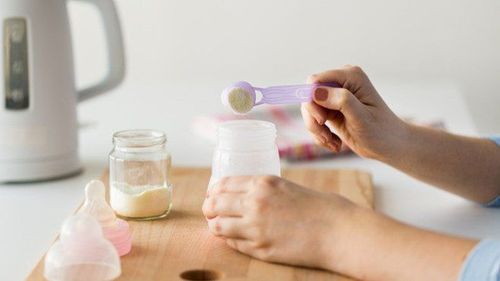
Before preparing formula, caregivers should thoroughly wash their hands with soap and water. Research has consistently shown that the hands of caregivers can transmit pathogens to infants during formula preparation, feeding, and diaper changes.
After each feeding, the feeding bottle, nipple, cups, stirring spoon, and measuring scoop should be thoroughly washed with soap under running water. Ensure that the chosen soap is safe for infant use. Pay attention to scrubbing both the inner and outer surfaces, especially the areas around the bottle's threads and the cap. Afterward, they should be air-dried or dried in the sun and stored in a container to prevent dust. Before each formula preparation, do not forget to rinse them again with boiling water. This also warms the bottle, helping to maintain the temperature of the prepared formula.
Despite the availability of various safe and effective bottle sterilization methods, including boiling, microwaving, and dishwashing cycles with sanitizing options, using a bottle warmer and sterilizer remains the most convenient, user-friendly, and time-efficient approach. Therefore, choosing a suitable warming and sterilizing device is a priority for many parents. The Moaz Bébé MB – 005 bottle warmer, sterilizer, and dryer is recognized as a valuable asset for parents, offering notable features such as:
- The sleek design and modern technology feature a spacious sterilization chamber that can hold 5-6 bottles and nipples simultaneously. The device is designed to accommodate all wide-neck bottles and can also sterilize baby's weaning bowls and utensils.
- The milk warming and sterilizing functions operate independently, with an accompanying alert sound upon completion of each process.
However, parents need to remember to thoroughly clean all items, shake them to remove excess water, and then place them in the sterilizer, as bacteria thrive in moist environments, so pre-drying is strongly recommended. Parents should also carefully read the operating instructions for each specific sterilizer model to ensure safe and effective disinfection.
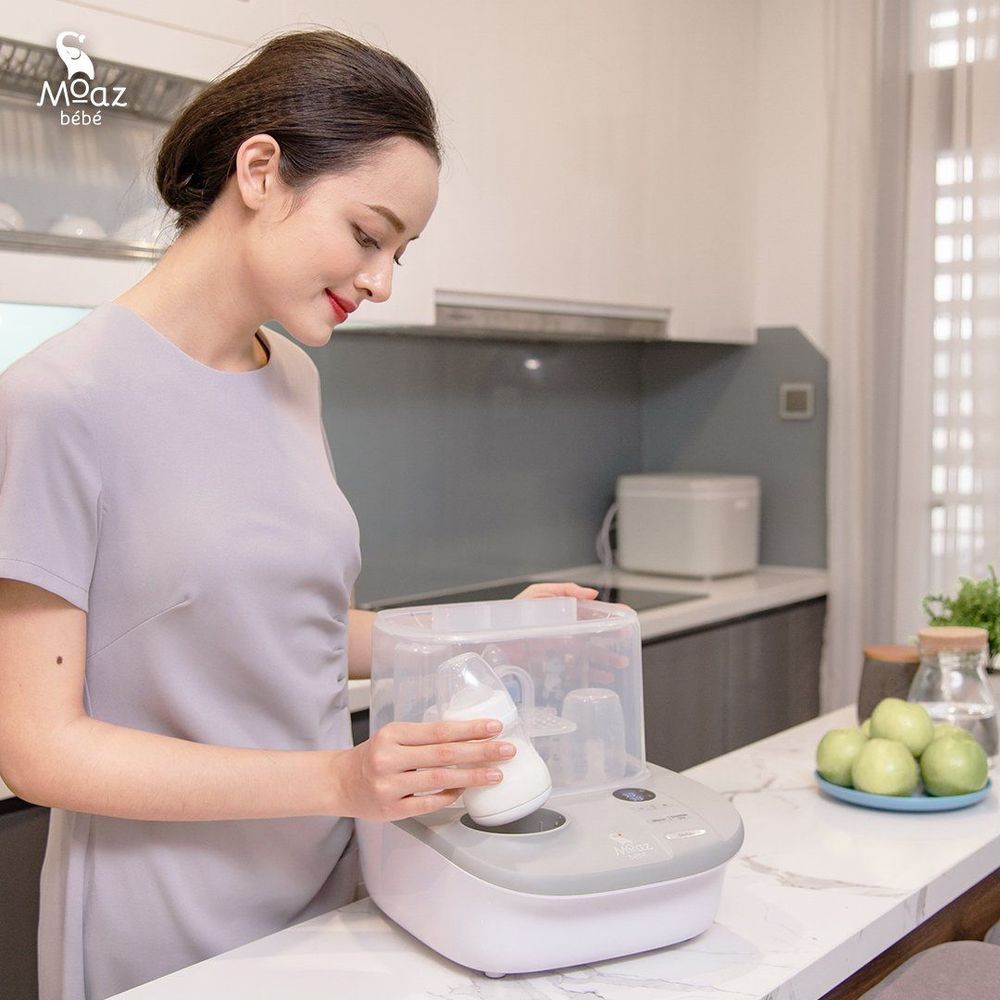
Preparing infant formula may seem easy, but it is a complex process. Each procedure and method requires learning and research, especially for first-time parents. Only by doing so can they confidently provide the best possible care for their child.
Optimal health and development in children depend on a diet that ensures adequate quantity and balanced quality of nutrients. Inadequate or imbalanced nutrient intake can result in deficiencies and excesses, which can negatively impact their overall development, including physical, mental, and motor skills.
Improper feeding in children can result in micronutrient deficiencies, leading to anorexia, growth retardation, and malabsorption. If these signs are observed, parents should consider supplementing their children's diet with products containing lysine and essential micronutrients and vitamins such as zinc, chromium, selenium, and B-complex vitamins to ensure adequate nutrient intake. These nutrients support digestion and enhance absorption, improving appetite and promoting healthy eating.
To arrange an appointment, please call HOTLINE or make your reservation directly HERE. You may also download the MyVinmec app to schedule appointments faster and manage your reservations more conveniently.

